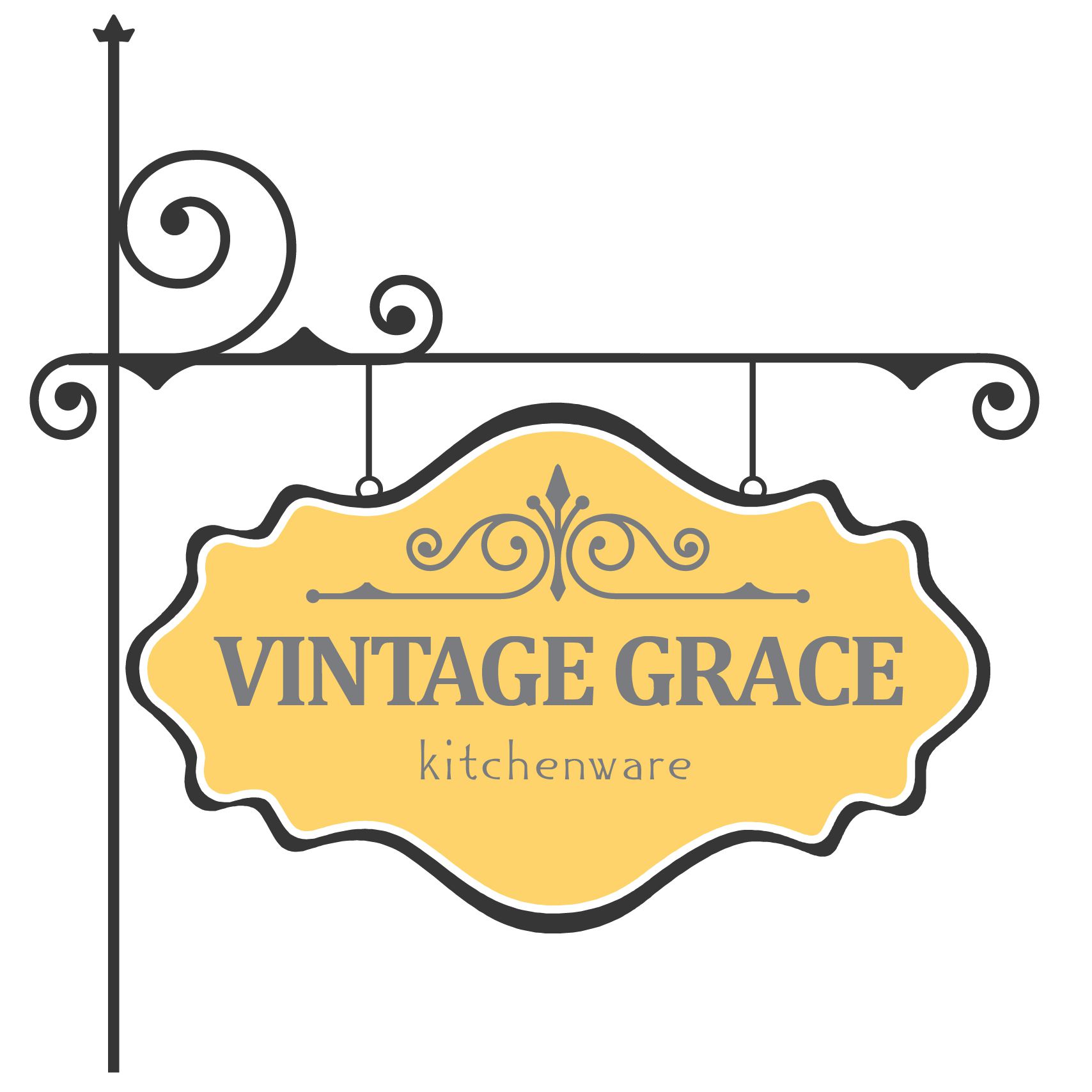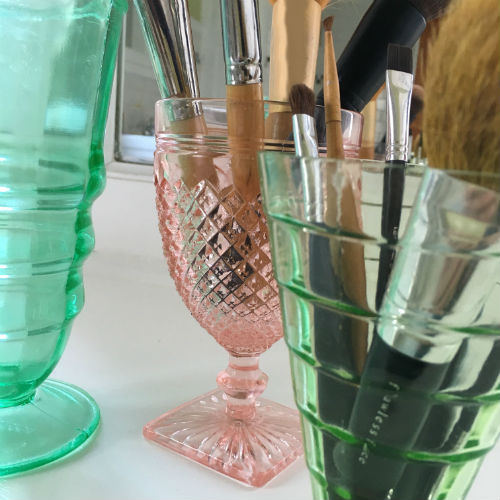Newsletter - Stuffed artichoke recipe
Newsletter #1 - Stuffed Artichoke Recipe & Depression Glass History
Posted on May 3rd 2016
| Vintage Grace Newsletter #1 | May 3, 2016 |
|
|
Welcome to Vintage Grace’s first newsletter. Shopvintagegrace.com launched successfully on April 4, 2016. A huge thank you to friends, family and former colleagues for your well wishes and support of the site.
|
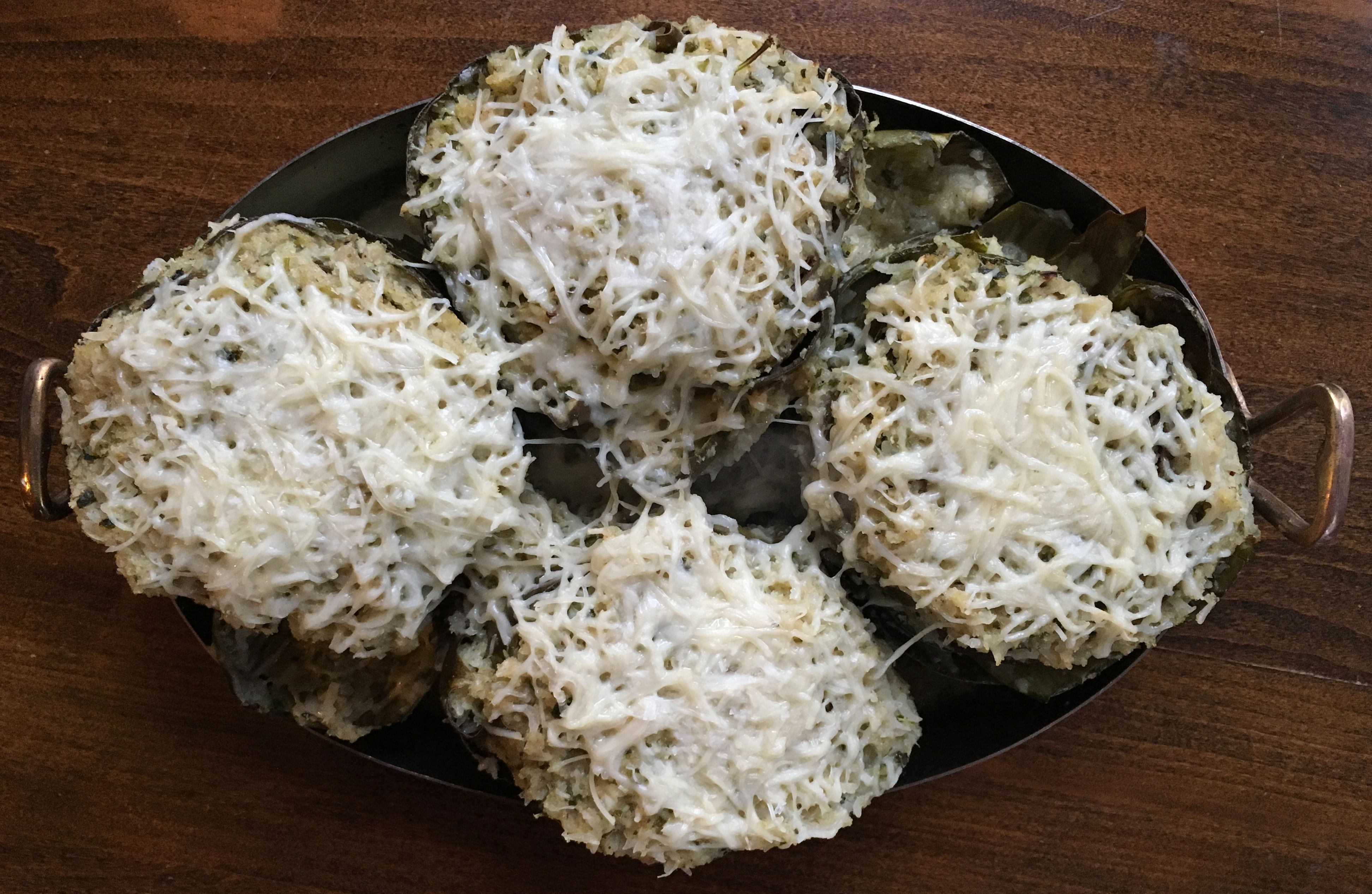
Featured Recipe: Artichokes stuffed with cauliflower
This recipe was inspired by my friend, Michelle Kujawski. Michelle and her mother self-published a cookbook of her Italian grandmother’s family recipes. I made her recipe for stuffed artichokes a few weeks ago and my children loved them! They exclaimed that they could eat those artichokes every night without complaining! The recipe was very good! Since artichokes are in season, I knew I wanted to make them again. I love to tinker with recipes, so this time I stuffed the artichokes with finely chopped cauliflower. Again, the kids loved them and thought the cauliflower tasted like cheese. Below are the results of my recipe tinkering. Enjoy.
Note: Michelle is a fantastic professional photographer. She took most of the lifestyle pictures featured on shopvintagegrace.com. I would highly recommend her for any business photography as she is extremely energetic, easy going and fun, yet professional. She also does lifestyle and wedding photography and her pictures are always beautiful. Her site is michellekujawskiphotography.com. You can also pre-order the second addition of her Italian family cookbook at russocookbook.com
This recipe is very forgiving so measurements do not need to be exact.
- 1 medium to large head cauliflower
- 1 bunch parsley
- 6 cloves garlic
- 1 cup uncooked rice (any kind will do, I used white jasmine)
- 2 cups panko or bread crumbs
- 1 t cayenne pepper (optional)
- Salt and pepper to taste
- 4 artichokes
- 2 cups chicken stock (veggie stock or water also work)
- 1 cup olive oil
- 1 cup shredded Parmesan cheese
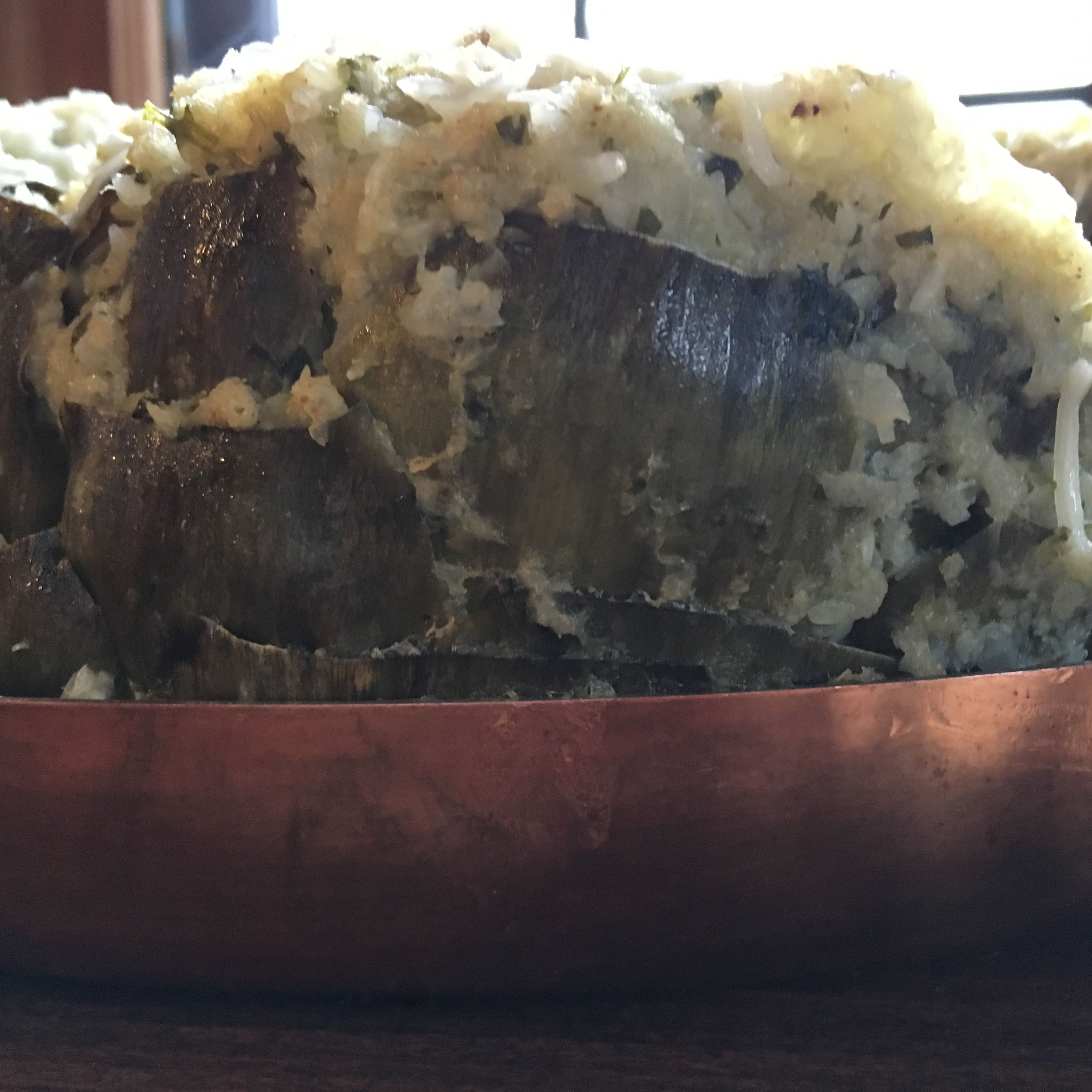
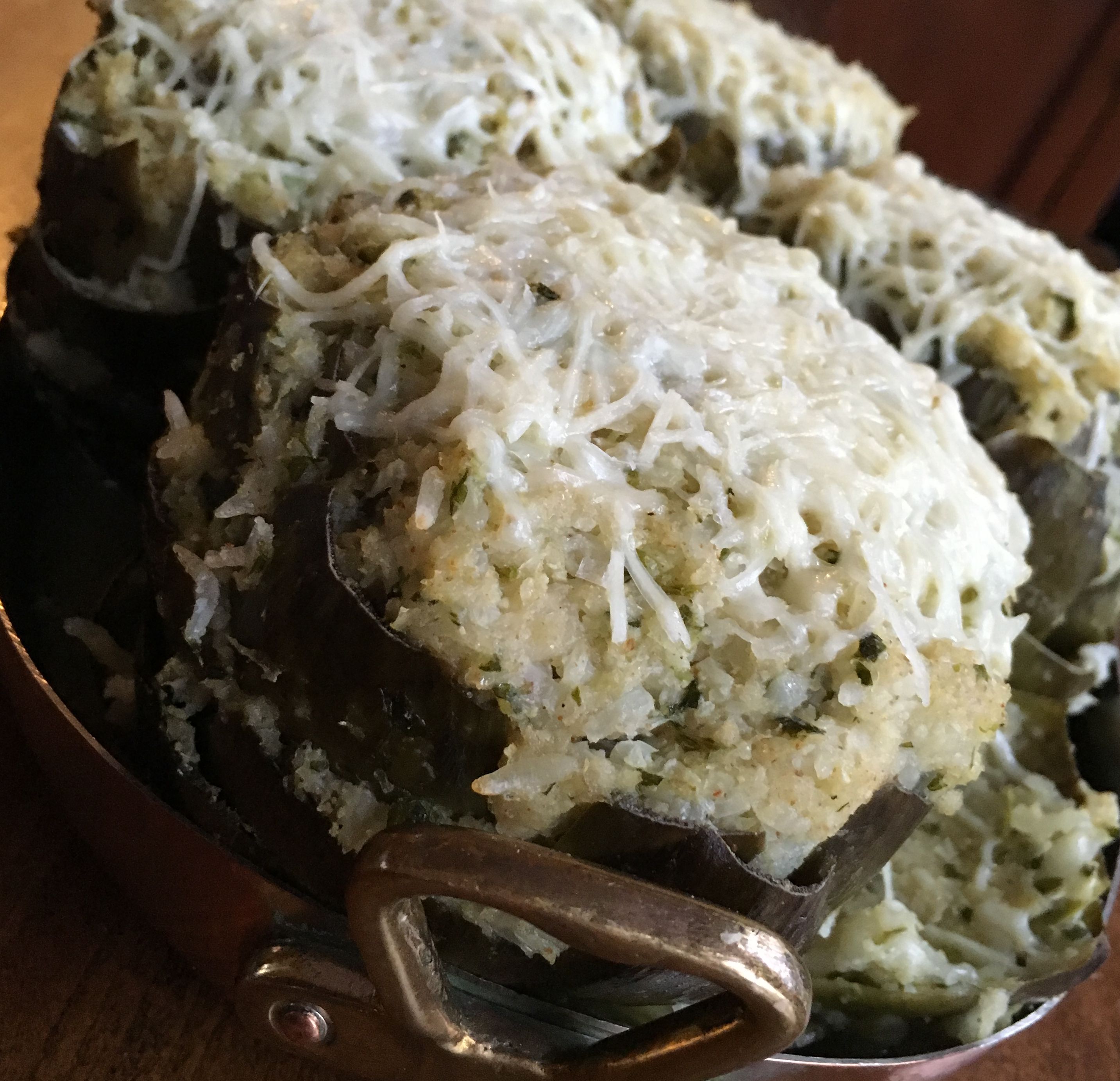
Cut cauliflower into florets. Slightly peel stem. Cut stem into chunks. Add florets and chunks of stem to food Cut cauliflower into florets. Slightly peel stem. Cut stem into chunks. Add florets and chunks of stem to food processor. Cut parsley bunch every one inch, including half the length of the stems. Discard lower half of parsley stems. Add to food processor. Peel cloves of garlic, add to food processor. Pulse food processor until everything is combined and finely chopped, about the size of rice kernels. If your food processor is small, this mixture may need to be made in multiple batches. Add mixture to large bowl.
Add rice, panko, cayenne pepper and salt and pepper to mixture. Stir until well combined.
Prepare artichokes by cutting off a small portion of the bottoms and any stems so the artichokes will sit flat. Peel one or two layers of leaves off the bottom of each artichoke, discard. Cut about 1 inch off the top of each artichoke then use a kitchen scissors to trim the outer leaves that have a pointy top. Trim ½ to ¼ off the top of each pointy leaf. Wash each artichoke while gently pulling open the center of the artichoke. Gently opening the artichoke in this manner will help make room to stuff the artichokes with the cauliflower mixture. Drain upside down for a few minutes.
Heat a Dutch oven or large wide pot with the chicken stock (water also works fine).
In a separate bowl, stuff each artichoke with the cauliflower mixture. Stuff one at a time starting in the center of each artichoke and working your way to the outer leaves. Push the mixture in between as many leaves as possible. The artichoke will double in width after being stuffed with the mixture. As each artichoke is stuffed, add it to the Dutch oven. Slowly pour about ¼ cup olive oil over the artichoke to let it soak into the cauliflower mixture. After all artichokes are stuffed, in the Dutch oven and covered in olive oil, make sure the stock is about half way up the artichokes. Add stock or water as necessary. Add any remaining cauliflower mixture to the Dutch oven over the top of the artichokes. Cover and cook on stovetop at medium for about 40 minutes or until leaves are able to be easily pulled from the artichoke.
Preheat broiler. Remove each artichoke from the Dutch oven, draining the stock back into the Dutch oven as it is removed, placing the artichokes in a shallow baking dish. Cover each artichoke with ¼ cup shredded Parmesan cheese. Place in oven under broiler for appx. 5 minutes or until cheese is golden.
Let cool for 5 minutes before serving. Serve in large bowls or on plates. Have extra napkins and large bowls ready to discard artichoke leaves. Pull each artichoke leaf out with fingers. Pull cauliflower mixture and soft parts of artichoke off with your teeth. Discard tough part of artichoke leaf in discard bowl.
BONUS recipe: There will be a soupy cauliflower mixture left in the bottom of the Dutch oven. Use this for tomorrow night’s meal! Make a simple soup by adding some canned cannellini or garbanzo beans, heat over medium low heat while frying up some bacon. Stir in some left over Parmesan (if any). Chop bacon into small pieces and add to soup. Serve with crusty bread.
Featured Products: Depression Glass Kitchenware
The Great Depression hit the pocket books of Americans hard but around the same time innovations were developed to make the manufacturing by machine of transparent glassware very inexpensive. The depression glass production period extended for several years on both sides of the actual Great Depression. Many companies desperate to stay in business during these hard economic times found clever ways to entice customers to buy their products. One such way was to give away promotional glass dishes with the purchase of a particular product, including soap and cereal.
Depression glass kitchenware includes tea cups and saucers, plates, children’s tea sets, cake stands, parfait cups, wine glasses, water goblets, tumblers, refrigerator boxes, sherbet cups, pitchers and mixing bowls as well as other pieces. Prohibition was in full force during the period depression glass was produced so while you will see wine glasses with very small capacities, which were to be used for medicinal purposes only, you will rarely find a decanter. In 1933, prohibition was repealed and glass companies made up for lost time by making lots of decanters.
There were over 100 glass companies producing depression glass during the early 1920s. Most were located in Pennsylvania, West Virginia and Ohio. That number fell to less than 50 by the end of the Great Depression. Some common ones still known today include Federal Glass Company, Hazel-Atlas Glass Company, Hocking Glass Company, Indiana Glass Company, Jeannette Glass Company and MacBeth-Evans Glass Company.
Since depression glass was made for the masses, you can expect flaws in the glass from the manufacturing process. These may include such things as small bubbles, color discrepancies and mold marks. To help keep costs down, Depression glass was distributed straight from the mold without any quality control or hand finishing, as was done with other types of glassware produced during the same period. Most collectors find these flaws to be part of the uniqueness and charm of Depression glass.
Using color in a household to decorate became trendy in the 1920s. Carnival glass was a fading trend. Popular colors of the time were mainly amber and yellow. Green, blue and pink were also produced and are popular colors for today’s collectors.
Entertaining with Depression glass can add a pop of color to a tablescape or bar cart. Depression glass can also be used in non-traditional ways. Use a sparkling Depression glass water goblet to hold your makeup brushes on your beauty table. Add a pretty and feminine Depression glass tray to your dresser as a catch all for your jewelry. Combine a few sizes of decorative Depression glass bowls on a shelf in your closet for bracelets, necklaces, scarves or hair clips. There are lots of possibilities for using Depression glass. Find a few pieces that you love and use them regularly.
Do you have a favorite unique way to use Depression Glass? Use the comments below to tell us about it.
Graceful Entertaining Tip
The most important job of a host
and hostess is to make their guests feel welcome. Set the tone of the party and make your
guests feel special by greeting them as soon as they walk through the
door. Offer to take their coat and
anything they may be holding (children included). After simple pleasantries, offer your guests
a drink based on the occasion for the get together. For get-togethers with children, this may be
as simple as a glass of water or iced tea.
If you are hosting during the morning hours, you will want to offer your
guests coffee or tea. When having friends,
family or colleagues over for dinner, start the evening with a special craft
cocktail or mocktail. No matter the type
of beverage that you are serving, find a vintage water goblet, vintage tumbler,
vintage coffee cup, vintage tea cup, vintage wine glass, vintage highball or vintage rocks
glass that suits your unique style. Find
your style now.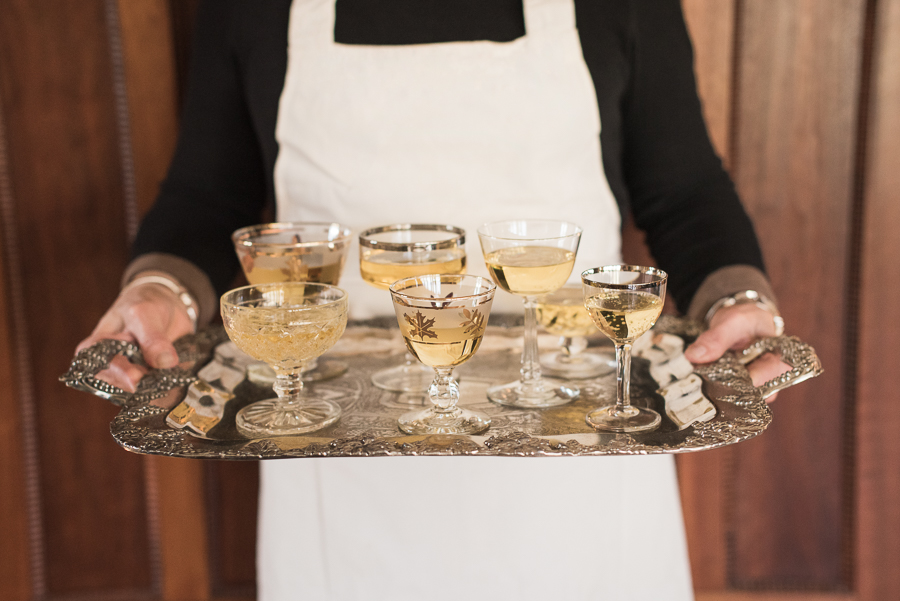
Thank you for reading Vintage Grace’s first newsletter. To receive future newsletters in your inbox as soon as they are published, make sure we have your email address. Sign up at the bottom of shopvintagegrace.com
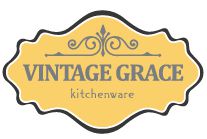
 Loading... Please wait...
Loading... Please wait...
